Description
Familiarity with treatment
A beard transplant is a surgical procedure that involves harvesting hair follicles from a donor area (usually the back of the scalp) and transplanting them to the beard area. This procedure is typically performed on individuals who have thin or patchy facial hair and want to achieve a fuller and more defined beard.
During the procedure, the surgeon extracts individual hair follicles from the donor area and implants them into the beard area using tiny incisions. The transplanted hair follicles continue to grow naturally, resulting in a permanent and natural-looking beard.
Beard transplants have gained popularity in recent years as more men seek to enhance their facial hair. It is important to consult with a qualified and experienced surgeon to determine if you are a suitable candidate for the procedure and to discuss your expectations and desired outcomes.
Who is it suitable for?
Beard transplants are suitable for individuals who have thin or patchy facial hair and desire a fuller and more defined beard. Here are some common reasons why people opt for beard transplants:
- Sparse Facial Hair: Some individuals may have genetic factors or hormonal imbalances that result in thin or patchy facial hair growth. Beard transplants can help these individuals achieve a more even and fuller beard.
- Facial Scarring: Scarring from accidents, burns, or previous surgeries can affect the growth of facial hair. Beard transplants can be used to cover up these scars and restore a natural-looking beard.
- Congenital Conditions: Certain congenital conditions, such as alopecia areata or hypotrichosis, can cause limited or no facial hair growth. Beard transplants can help individuals with these conditions achieve the beard they desire.
- Gender Transition: Transgender individuals who are transitioning from female to male may opt for beard transplants to enhance their masculine appearance and achieve facial hair growth.
Who is it not suitable for?
Beard transplants may not be suitable for everyone. Here are some factors that may make someone ineligible for the procedure:
- Insufficient Donor Hair: Beard transplants require a sufficient amount of donor hair to be harvested from another area of the body, typically the back of the scalp. If a person does not have enough donor hair or has thinning hair all over, they may not be a suitable candidate for the procedure.
- Active Hair Loss: If a person is experiencing active hair loss or has a progressive hair loss condition, such as male pattern baldness, it may not be advisable to undergo a beard transplant. The transplanted hair follicles may also be susceptible to the same hair loss process.
- Unrealistic Expectations: It is important for individuals considering a beard transplant to have realistic expectations. The procedure can enhance the appearance of facial hair, but it cannot create a completely new beard or guarantee specific results. It is essential to have a thorough consultation with a qualified surgeon to discuss expectations and potential outcomes.
- Medical Conditions and Medications: Certain medical conditions, such as bleeding disorders or autoimmune diseases, may make someone ineligible for a beard transplant. Additionally, some medications, such as blood thinners, may interfere with the healing process and increase the risk of complications.
Advantages
Beard transplants offer several advantages for individuals who desire a fuller and more defined beard. Here are some of the key advantages of beard transplants:
- Natural-Looking Results: Beard transplants use the individual’s own hair follicles, typically harvested from the back of the scalp, to create a natural-looking beard. The transplanted hair continues to grow and can be styled and groomed just like natural facial hair.
- Permanent Solution: The transplanted hair follicles in a beard transplant are typically resistant to the effects of DHT (dihydrotestosterone), the hormone responsible for male pattern baldness. This means that the transplanted hair is less likely to fall out over time, providing a permanent solution for a fuller beard.
- Customizable and Personalized: Beard transplants can be tailored to meet the individual’s specific needs and desired beard style. The surgeon can strategically place the transplanted hair follicles to create a beard shape and density that suits the person’s facial features and preferences.
- Boost in Self-Confidence: For individuals with thin or patchy facial hair, a beard transplant can significantly improve self-confidence and self-esteem. A fuller and more defined beard can enhance facial aesthetics and create a more masculine appearance.
- Minimal Downtime: While the recovery period may vary depending on the individual, beard transplants generally have a relatively short downtime. Most people can resume their normal activities within a few days to a week after the procedure.
Complications
Like any surgical procedure, beard transplants carry some potential risks and complications. While these complications are relatively rare, it is important to be aware of them. Here are some possible complications associated with beard transplants:
- Infection: There is a risk of infection at the donor and recipient sites. Following proper post-operative care instructions, including keeping the area clean and taking prescribed antibiotics, can help minimize this risk.
- Bleeding: Some bleeding is normal after the procedure, but excessive bleeding can occur in rare cases. Your surgeon will provide instructions on how to manage bleeding and will take steps during the procedure to minimize this risk.
- Scarring: The incisions made during the transplant process may result in small scars. However, skilled surgeons use advanced techniques to minimize scarring and ensure that they are well-hidden within the natural beard growth pattern.
- Swelling and Bruising: Swelling and bruising around the donor and recipient areas are common after the procedure. These usually subside within a few days or weeks, but proper post-operative care can help reduce their severity.
- Numbness or Sensitivity: Some individuals may experience temporary numbness or sensitivity in the donor or recipient areas. This typically resolves on its own over time, but it is important to inform your surgeon if you experience any prolonged or concerning sensations.
- Poor Hair Growth: In some cases, the transplanted hair follicles may not grow as expected, resulting in poor hair growth or an uneven beard. This can occur due to various factors, including improper technique, inadequate blood supply, or individual hair characteristics.
- Ingrown Hairs: Ingrown hairs can occur after a beard transplant, leading to inflammation and discomfort. Proper post-operative care and regular grooming can help prevent and manage ingrown hairs.
Previous care
Before undergoing a beard transplant, it is important to take certain precautions and follow specific care instructions. Here are some key considerations before getting a beard transplant:
- Consultation with a Qualified Surgeon: Schedule a consultation with a qualified and experienced surgeon who specializes in hair transplantation. During the consultation, discuss your goals, expectations, and any concerns you may have. The surgeon will evaluate your suitability for the procedure and provide personalized advice.
- Medical Evaluation: Undergo a thorough medical evaluation to ensure that you are in good overall health and do not have any underlying medical conditions that may interfere with the procedure or recovery process.
- Stop Smoking and Alcohol Consumption: If you smoke or consume alcohol, it is advisable to stop these habits at least a few weeks before the procedure. Smoking and alcohol can impair healing and increase the risk of complications.
- Medication Review: Inform your surgeon about any medications, supplements, or herbal remedies you are currently taking. Some medications, such as blood thinners, may need to be temporarily discontinued before the procedure to reduce the risk of excessive bleeding.
- Avoid Blood-Thinning Substances: Avoid consuming blood-thinning substances, such as aspirin or non-steroidal anti-inflammatory drugs (NSAIDs), for a specified period before the procedure. These substances can increase the risk of bleeding during and after the transplant.
- Follow Pre-Operative Instructions: Your surgeon will provide specific pre-operative instructions, such as guidelines for washing your hair, avoiding certain hair products, and fasting before the procedure. It is important to follow these instructions carefully to ensure optimal conditions for the transplant.
- Arrange for Transportation: Since the procedure may involve the use of sedation or local anesthesia, it is advisable to arrange for transportation to and from the clinic or hospital on the day of the transplant.
- Plan for Recovery: Prepare for the recovery period by ensuring you have enough time off work or other commitments. Follow your surgeon’s post-operative care instructions, which may include guidelines for washing the transplanted area, avoiding strenuous activities, and taking prescribed medications.
Aftercare
Aftercare is an essential part of the healing process following a beard transplant. Here are some important aftercare instructions to follow:
- Keep the Transplanted Area Clean: Gently clean the transplanted area as instructed by your surgeon. Use a mild, non-abrasive cleanser and avoid rubbing or scrubbing the area. Pat it dry with a clean towel.
- Avoid Touching or Scratching: It is important to resist the urge to touch or scratch the transplanted area, as this can disrupt the healing process and potentially dislodge the grafts. Be gentle when washing or styling your beard.
- Protect from Sun Exposure: Protect the transplanted area from direct sun exposure for at least a few weeks after the procedure. Wear a wide-brimmed hat or use sunscreen with a high SPF to shield the area from harmful UV rays.
- Follow Medication Instructions: Take any prescribed medications, such as antibiotics or pain relievers, as directed by your surgeon. Finish the full course of antibiotics to prevent infection.
- Avoid Strenuous Activities: Refrain from engaging in strenuous activities, heavy lifting, or intense exercise for a few weeks after the transplant. These activities can increase blood flow to the area and potentially disrupt the healing process.
- Sleep in an Elevated Position: For the first few nights after the procedure, sleep with your head elevated on pillows to reduce swelling and promote proper blood circulation.
- Follow a Healthy Diet: Maintain a balanced diet rich in vitamins, minerals, and protein to support the healing process and promote hair growth. Stay hydrated by drinking plenty of water.
- Attend Follow-up Appointments: It is important to attend all scheduled follow-up appointments with your surgeon. These appointments allow your surgeon to monitor your progress, address any concerns, and provide further guidance for optimal healing.
- Be Patient: It takes time for the transplanted hair follicles to settle and start growing. Be patient and avoid expecting immediate results. It may take several months for the full results of the beard transplant to become apparent.
- Communicate with Your Surgeon: If you have any questions, concerns, or notice any unusual symptoms during the recovery period, do not hesitate to contact your surgeon. They are there to provide guidance and support throughout the healing process.
Only logged in customers who have purchased this product may leave a review.
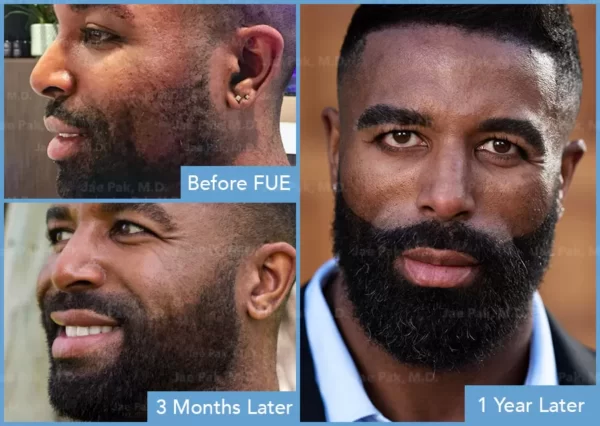

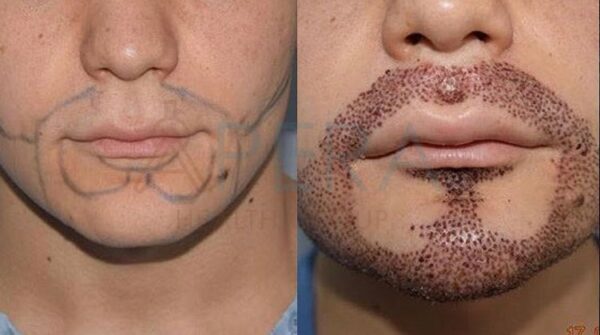
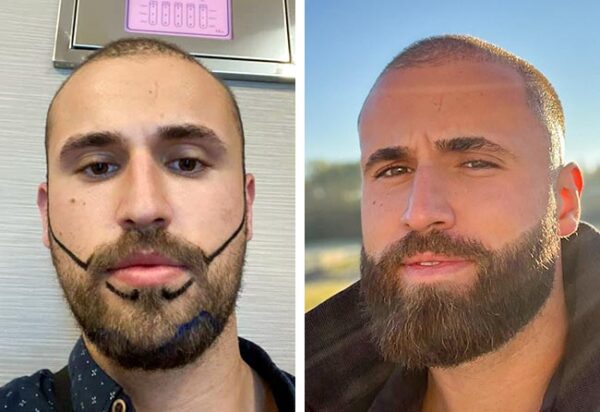
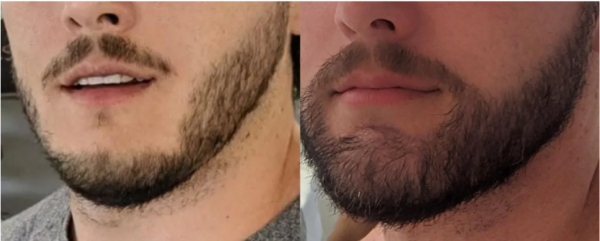
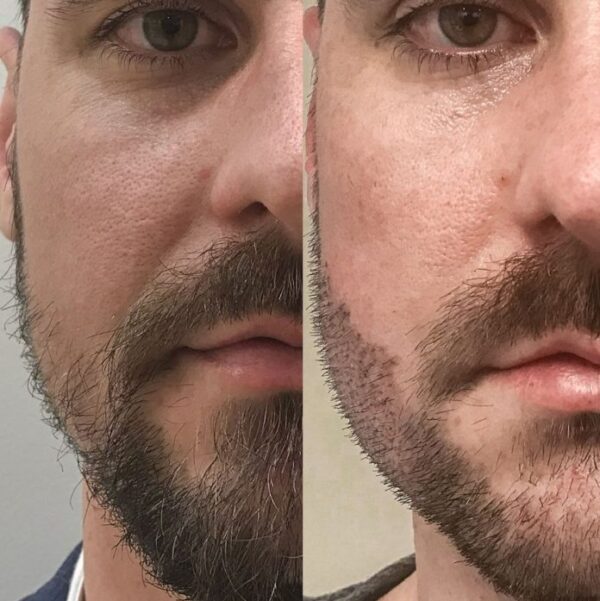
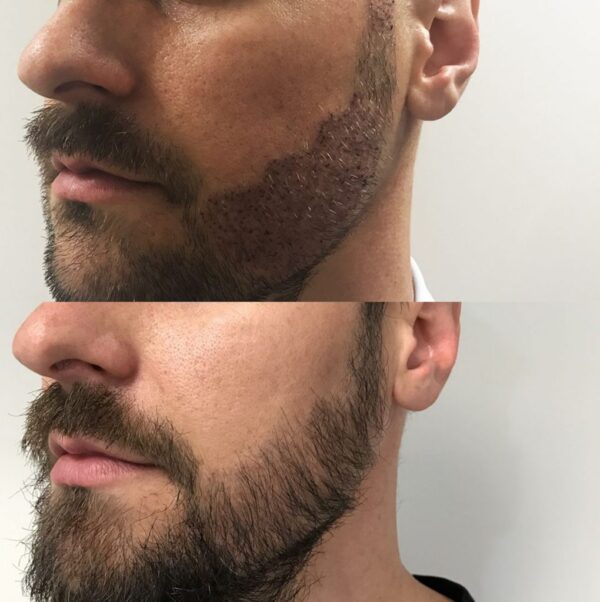

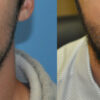
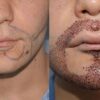

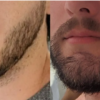
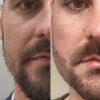
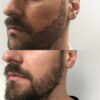

Reviews
There are no reviews yet.